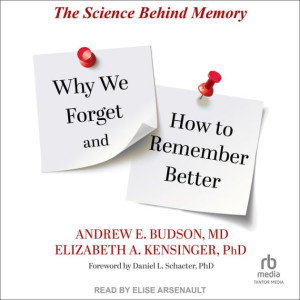Here’s a topic that has gotten lots of enthusiastic attention in recent years: embodied cognition.
As the name suggests, that phrase means — basically — “thinking with your body, not just your mind.”
Because your brain is a part of your body (it is, in fact, physically attached to your body), the concept makes rough-and-ready sense.
In at least two ways, this perspective has well-established research support.
First, physical fitness improves cognition — at least, up to a point.
We don’t need to be Olympic athletes to learn chemistry.
But if I’m conspicuously out of shape, the related health detriments harm my brain just as they harm my lungs; that harm makes learning harder. (If you want to get your neuroscience geek on, look up “brain-derived neurotrophic factor.”)
Second, some degree of physical movement during class moderates students’ alertness levels.
If my students are nodding off or bouncing giddily, I’ll get them up on their feet for a bit to get the blood moving (or to burn off some of that excess energy).
In these ways, the body’s physical state obviously matters for cognition.
And yet, over the years, I’ve had two basic concerns about broader claims within this field. Let me try to explain…
Better Definitions, Please
Scientific conclusions typically require precise measurements; precise measurements require precise defintions.
That is: I can tell you that this rock weighs more than that rock because I can measure it (on my scale) according to well-defined measurements (pounds or kilos).
But: if I want to say that this student is paying more attention than that student, I need a really good definition of attention, and a way to measure it. “This student demonstrates 6 attention units, whereas that one demonstrates only 4.”
Sadly, the concept of “embodied cognition” invites definitional muddle.
For instance: is mindful meditation “embodied cognition”? (It often includes a focus on the body.)
More broadly, here’s Wikipedia’s entry on embodied cognition. I’m not gonna lie; I get lost really quickly when I read that entry.
So, problem #1: I don’t always understand exactly what the claims about embodied cognition really are.
More Research, Please
I think I do understand one of the claims under the “embodied cognition” umbrella. I think the claim is:
Adding the right gestures to teaching helps students learn.
That is: using gestures (“embodied”) helps students think and learn (“cognition”).
A recent study in Australia pursued just this line of inquiry.
In this study, 33 students (aged 12-14) learned about Brownian motion.
Half of them saw a typical lesson — a powerpoint presentation, group discussion, worksheets — taught by an experienced teacher.
The other half saw the same lesson (powerpoint presentation, etc.) with additional, carefully designed hand gestures.
By the way, the teacher used the hand getures, and encouraged the students to do so as well.
Two days later, the students who saw and used the meaningful gestures (a.k.a., “iconic” gestures) scored a lot higher on a simple quiz. (For stats folks, the Cohen’s d was 0.98, which is really big!)
Now, I admit to some concerns about this study:
33 is a very modest sample size.
“2 days later” isn’t really learning.
Most important: there is no “active control group.”
That is: the researchers didn’t compare iconic gestures with another new strategy. Instead, they compared gestures to “business as usual.”
“Business as usual” isn’t often a very persuasive control group; after all, the novelty might explain the effect.
These concerns aside, I do think the study — combined with other similar studies — gives us some reason to think that the right gestures just might help students learn better.
I was especially glad to see an emphasis on students’ use of the gestures. This variable hasn’t gotten much attention in other studies I’ve seen, so I’m encouraged to see it getting greater visibility.
Lingering Questions
And yet, I STILL want more research. Here’s why:
Problem #2: I don’t think we have nearly enough research (yet) to establish useful principles for instructive gestures.
In other words: these gestures probably helped 13-year-olds learn about states of matter.
But: what sorts of gestures can help what ages learn about what topics?
Specifically:
If I want my students to know the difference between “comedy” and “tragedy” (and I do!), can gestures help with those concepts? How should I think about desiging those gestures?
What sorts of topics in a history class would benefit from gestures?
Should foreign language teachers have students make specific gestures — say — when they learn different declensions? When they learn masculine or feminine nouns?
I’m not trying to be difficult or grouchy when I ask these questions. I’m trying to understand how seeming success in this one case could be translated to other topics, other disciplines, and other age groups.
Growing Concerns
More broadly, I worry that “iconic gestures/embodied cognition” will become the Next Thing We’re All Talking About.
Teachers will get instruction about Iconic Gestures, be required to use them, and be evaluated on their use … even though we don’t have even basic guidelines on how to create or use them. (At least, as far as I know.)
For instance: the topic of Brownian motion was chosen, in part, because it is “susceptible to being taught using specific gesticulation.”
What about topics that aren’t obviously susceptible?
In fact, if you look at the gestures used during the lesson, they don’t seem too far off from the sorts of gestures that teachers might make spontaneously.
Are “iconic gestures” simply “the sorts of gestures we’d use anyway, but formally planned, scripted, practiced, and repeated by students”?
If yes, does the entire topic of iconic gestures change from “revolutionary” to “a modest technical update to something we’re doing anyway”?
I’m entirely open to the possibility that gestures (“embodied”) can help students learn (“cognition”) … but we need more research to know for sure.
TL;DR
Because the brain is in the body, the body’s physical state obviously matters for learning.
This recent study from Australia (and others) suggest that well crafted hand gestures can help students learn some concepts.
However, the principles that guide us in the creation and use of those hand gestures are not yet well mapped. So: we just don’t know how widely this technique might benefit teachers, schools, and students.
If someone insists you start using gestures because “research in embodied cognition says you must!”, ask to see the specific study.
Bentley, B., Walters, K., & Yates, G. C. (2023). Using iconic hand gestures in teaching a year 8 science lesson. Applied Cognitive Psychology.












